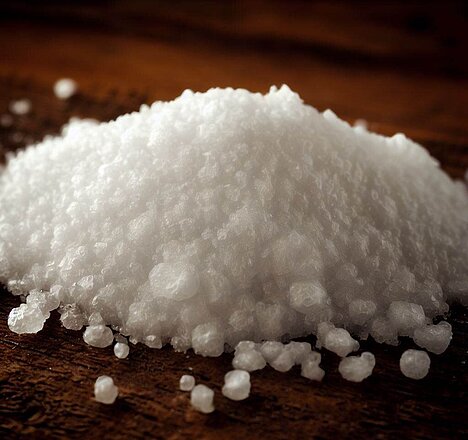Prussic acid

What is hydrogen cyanide?
Prussic acid (also known as hydrogen cyanide) is a colorless to slightly yellowish liquid that is highly flammable and very volatile. It evaporates very quickly at room temperature and smells of bitter almonds. However, this smell is not perceived by everyone.
Prussic acid is found in many plants, especially in the stones of stone fruits such as cherries, peaches and apricots. These contain cyanogenic glycosides, which are broken down into hydrocyanic acid during digestion or when bitten into. Other plants such as bamboo or flax can also contain hydrocyanic acid.
How does prussic acid affect dogs?
Prussic acid inhibits the respiratory chain in the cells and thus prevents oxygen uptake into the blood. This leads to internal asphyxiation and can result in the death of the animal.
Symptoms of hydrogen cyanide poisoning include vomiting, diarrhea, abdominal pain, salivation or shortness of breath. In larger quantities, convulsions, unconsciousness or cardiac arrest can also occur.
The severity of the poisoning depends on the amount and concentration of hydrogen cyanide ingested. The lethal dose for dogs is around 1 mg per kg body weight.
What are the benefits of hydrogen cyanide?
Prussic acid also has some positive effects on the body. For example, it can strengthen the immune system, inhibit inflammation or fight cancer cells. However, these effects only occur at very low doses and do not outweigh the risks of poisoning.
How can you protect your dog from hydrogen cyanide?
To protect your dog from hydrogen cyanide poisoning, you should follow these tips:
Do not give your dog any seeds from stone fruits or other parts of plants that contain hydrocyanic acid glycosides. Always core all fruit thoroughly and dispose of the seeds safely.
Make sure your dog does not lick or sniff pesticides such as Cyclon. These contain liquid hydrogen cyanide and are very dangerous to animals.
Also, do not feed your dog food that contains artificial flavorings such as benzaldehyde. Benzaldehyde is derived from bitter almond oil and can contain traces of hydrogen cyanide.
If you suspect that your dog has eaten something containing hydrogen cyanide, take him to the vet immediately. There he can be treated with an antidote.
Prussic acid is a toxic substance for dogs and should be avoided. It is found in many plants and can cause severe poisoning if consumed in excess. But it also has some positive properties at very low doses.
Properties 7
Are you looking for other ingredients with a specific property?
Just click on them to find more.
If you notice any signs of hypersensitivity or poisoning in your dog, you should see your vet immediately. We are not a substitute for a vet, but we try to be as accurate as possible. Every dog reacts differently and we recommend you get a second opinion or consult your vet if in doubt.
Stay healthy and take good care of your four-legged friend!😊
Similar to Prussic acid
Properties:Potassium cyanide forms colorless crystals that have a bitter almond-like odor.It has a melting point of 634 °C and dissolves well in water, but only poorly in alcohol.For genetic reasons,...
Nitrobenzene was first synthesized in 1834 by the German chemist Eilhard Mitscherlich. He heated benzene with nitric acid and sulphuric acid and obtained nitrobenzene as the main...
Chloroform can be very toxic to dogs if inhaled, swallowed or absorbed through the skin. It can cause severe damage to the liver, kidneys, heart and brain. It can also cause cancer and damage the...
Arsenic is a semi-metal that exists in various compounds. There are organic arsenic compounds, which contain carbon, and inorganic arsenic compounds, which do not contain carbon. Organic arsenic...



